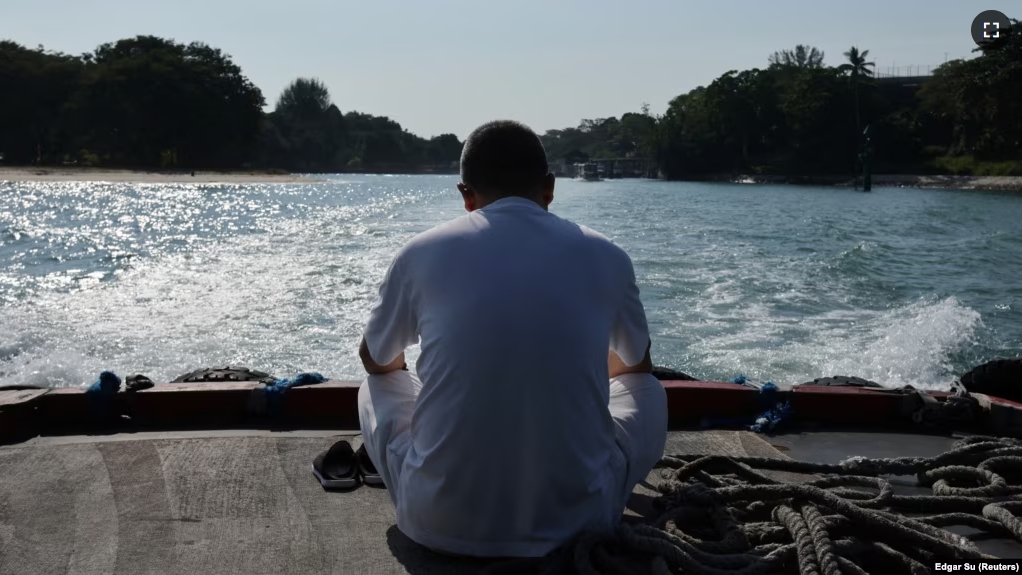A short boat ride from the wealthy city-state of Singapore is something rare – a small, quiet island.
People living on Pulau Ubin still talk about the arrival of solar power 11 years ago. They call it a “miracle.”
Although the electricity was expensive, Chu Yok Choon said he loved the convenience. He could just press a button, and a pump would send water to his home from the village well. Until 2013, Chu had to carry water from the well by hand and use generators to provide electricity.
Chu is one of 30 people living on Pulau Ubin. The island measures only 10 square kilometers. He spoke to Reuters recently and compared life on the island to life in Singapore, or as he calls it, the mainland.
“Life on the mainland doesn’t feel natural,” said the 79-year-old. “Life here is quieter.”

Pulau Ubin includes forest areas and wetlands. The wetlands were once under threat from development until the plans were postponed.
The island offers visitors walks along thick greenery and lakes that were formed from rock quarries. They can ride bicycles on roads free of vehicles and eat seafood meals by the water’s edge.
For those living in Singapore, the island is an escape. It can be reached in about 10 minutes by ferry. But for those who live on the island, those ferry rides can be inconvenient. Trips to the mainland to buy food and other necessities can be delayed.
Also, ferries can be costly. For visits to the city, Chu said he would have to wait until the ferry filled up with 12 passengers. Each person pays $3. This cost is similar to Singapore’s public transportation. But if he is in a hurry, he would have to pay $36 for the whole boat.

Still, the residents stay. They say they are enjoying a life different from the busy, stressful conditions in the city.
“The energy is so fantastic,” said 54-year-old Koh Bee Choo. She lives in a house on top of wooden supports that extends out over the water.
“I go for morning walks and I absorb the energy in the jungle,” added Koh. She lived in Singapore for nearly five years but returned to the island to run a bicycle rental shop.
While the older generation enjoys island life, their children have moved to the city after going there to attend school.
This has left an aging population. The island’s youngest residents are in their 50s. Conservation experts worry about the island’s future. No one is permitted to move to the island from the city. In 2001, the government said the island was safe from changes until changes are required for development.
At the height of its popularity, almost 4,000 people lived on the island. They worked in granite quarries and on farms. But the largest quarry closed in 1970. Then, many people moved to the city where a policy to develop industry grew the economy and covered a once-struggling nation in new developments, roads and factories.

A disappearing way of life
Each June for the past nine years, Singaporean officials have celebrated “Ubin Day.” The goal is to help people value and love the island’s heritage and ecosystem, the National Parks Board says on its website.
Games and enrichment booths mark the celebration. So do plans for the island’s future.
In 1991, the government stopped a plan to extend the subway to the island. Now there are talks about saving the island for future generations. But there will come a day when no one will live there anymore.
“The old people have died off, one by one…,” said Chu. He told Reuters that young people do not want to stay.
Koh said she hoped officials would let more people stay in guesthouses. “Not the high-end ones but the kampung-type,” she added, using the Malay term for a village.

Lim Csye See is a 69-year-old who runs a bicycle rental shop. Lim said he did not want the island to become like Sentosa, Singapore’s theme park island which is crowded with costly hotels and homes.
“If this place becomes like Sentosa, then that’s the end,” said Lim.
I’m Anna Matteo.
Xinghui Kok reported this story for Reuters. Anna Matteo adapted it for VOA Learning English.
_____________________________________________
Words in This Story
miracle –n. a wondrous or amazing event
convenience –n. a quality or situation in which things are easy and do not involve hard work
generator –n. a machine that produces electricity usually from burning fuel
quarry –n. an open place where rock is cut to use for building purposes
stressful –adj. something that causes tension and worry
fantastic –adj. wonderful or especially good
absorb –v. to take in
conservation –n. marked by a desire to save maintain and save something for the future
guesthouse –n. a place where visitors can stay, usually for a modest price and with modest rooms and accommodations
theme park –n. a place with many mechanical rides and exciting events that are meant to entertain people
